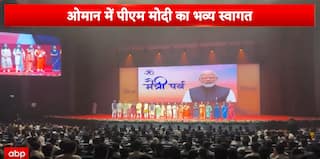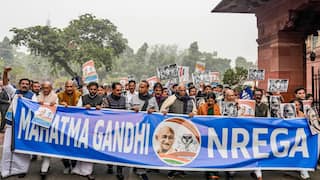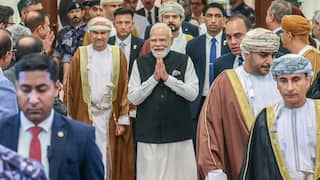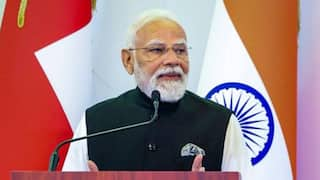Explorer
Can Kia Motors kickstart stalled 'Make in India'?

News that Kia Motors, a Hyundai Motors subsidiary, will produce 300,000 compact cars and SUVs by the second half of 2019, is indeed good.
It will do so at its $2 billion brand new facility in Penukonda, Anantapuramu district, Andhra Pradesh.
Iconic Chief Minister Chandrababu Naidu, who had once brought Bill Gates and Microsoft to Hyderabad, has bagged a significant new project. Earlier, Hero Motors and Isuzu had located new automotive plants in Chittoor district also.
The advent of the globally popular Kia brand, with 7 manufacturing plants around the world including this newest one, will mean an estimated 10,000 new jobs at the 576 acre location.
South Korea’s Hyundai Motors has, of course, completed 20 years in India. It came in just after market leader Maruti-Suzuki and firmly secured second place for itself.
This, in the 100% foreign direct investment (FDI) industry, allowed by the automatic route, that first opened up in 1991 and gradually put paid to the Ambassador-Premier Padmini era.
Happily, all the automotive ventures from the Hyundai conglomerate have done well in the 3 million per annum car market in India.
The automotive sector, inclusive of passenger cars/MUVs/SUVs, commercial vehicles, three and two wheelers, car parts, ancillaries, is a success story.
It has received $15.065 billion in foreign direct investment, on a cumulative basis, between 2000 and 2016. It accounts for 7.1 % of GDP, and 22% of India’s manufacturing GDP at present.
The entire capital goods sector, which notably includes electronics equipment and cellphones, currently employs 1.4 million people and expects to double this number going forward.
India is currently the 5th biggest passenger car market in the world for vehicles that run on fossil fuels, and is headed towards the 3rd position by 2020.
Market leader Maruti-Suzuki’s Chairman, RC Bhargava, welcomed the arrival of Kia, because he expects India’s automotive growth potential to provide ample room for competition. It is slated to take car sales up to 10 million per annum.
Several manufacturers, such as Hyundai, VW, Ford, are also creating capacity for exports from India.
All this joy is quite unlike the bedevilled, and finally abandoned, Posco Steel mining project, also hailing from South Korea.
Posco, formerly Pohang iron and Steel Company, wanted to establish a $12 billion greenfield steel plant, way back in 2005. This, alongside the aborted Arcelor project, both in Odisha.
Both ran into political uproar, land acquisition, licensing, ecological and forest department brick walls, leading to extensive litigation. Finally, after over a decade of efforts, Posco followed Arcelor into giving up.
It has recently offered to return the 2,700 acres of state government land near Paradip, allocated to it.
These two debacles are text book illustrations of how difficult it still is to execute a large mining, or indeed manufacturing project in India. We can cope with a billion or two in investment it appears, but what about 100 billion?
And it does our image, as a competitive investment destination, despite a fast growing economy, and huge domestic demand, no good at all.
It badly affects quantum inward investment. Total FDI in FY 17 is expected to be only $35 billion.
This is a pittance, when compared to China’s $128 billion from 2014, with another $111 billion for Hong Kong, separately!
The largest Indian potential investment sector, defence manufacturing, under the Make in India programme, does have the legs to easily attract $150 billion per annum. But, three years into the present administration, it has yet to take off.
This, due to multiple reasons. Including a reluctance on the part of collaborators to part with the latest high technology on reasonable terms, or even manufacture on a 100% owned basis in country, for fear, no doubt, of leakages.
Besides, we lack adequate domestic infrastructure, or quantum matching investment, to cope with such large projects.
However, several agreements have recently been signed and since it being a major policy thrust area to manufacture armaments in India, a breakthrough is also imminent.
Perhaps it could come, in the near future, via the Prime Min ister’s forthcoming visit to Israel, in badly needed Unmanned Aerial Vehicle (UAV” and “killer” drone manufacturing. India has imported about 200 drones and UAVs from Israel already.
There are other would-be collaborators, such as the manufacturers of the Griffen fighter aircraft from Sweden, who are willing to meet Indian concerns half way.
The mandatory “offset” clauses that call for up to 30% of any joint-venture in defence to source material domestically, also has a potential run-off of at least $20 billion annually.
Several top Indian companies have indeed formed joint ventures with approved foreign entities for the very purpose. But how soon can they expect orders?
The problem apparently is in first settling up units capable of delivering parts for aircraft, tanks, automatic rifles, and the like, to the extremely exacting standards. The know-how for this has to be imported, and suitable locals have to be trained.
Even Hindustan Aeronautics Limited (HAL), a public sector aeroplane making facility, in existence for decades now, is thought to be inadequate and incompetent to assemble the Rafale fighters on order.
This is the situation, with Rafale refusing to guarantee the performance of locally assembled planes, let alone HAL manufacturing them after technology transfers.
Forward integration in manufacturing in defence weaponry and other high technology areas, is not possible without setting up competent backward integration units from scratch.
And this with the proper levels of technology, quality control, raw material sources, sophistication, secrecy, security, R&D, adaptation and tropicalizing capacity, etc.
“Red tape” also remains so endemic to the Indian process and experience, that despite lower labour costs, it is not easy to actually set up a new facility here.
Many initiatives remain to be taken, a lot to do with modernisation and infrastructure, to drive the share of manufacturing to 25% of GDP overall, with its potentially millions of new jobs, as intended.
Still, with immense efforts being undertaken by the Modi Government to simplify procedures and open up various sectors, the inertia is on its way to being overcome.
This particularly with more legislative control expected shortly with majorities in both houses of parliament.
With the best of the Indian private sector very keen on assisting this grand vision, there is considerable hope for the future. Meanwhile, welcome Kia Motors.
(Gautam Mukherjee is a blogger on politics, economics and policy. His twitter handle is @gautammuk)
Disclaimer: The opinions, beliefs and views expressed by the various authors and forum participants on this website are personal and do not reflect the opinions, beliefs and views of ABP News Network Pvt Ltd.
Follow Blog News on ABP Live for more latest stories and trending topics. Watch breaking news and top headlines online on ABP News LIVE TV
View More


























